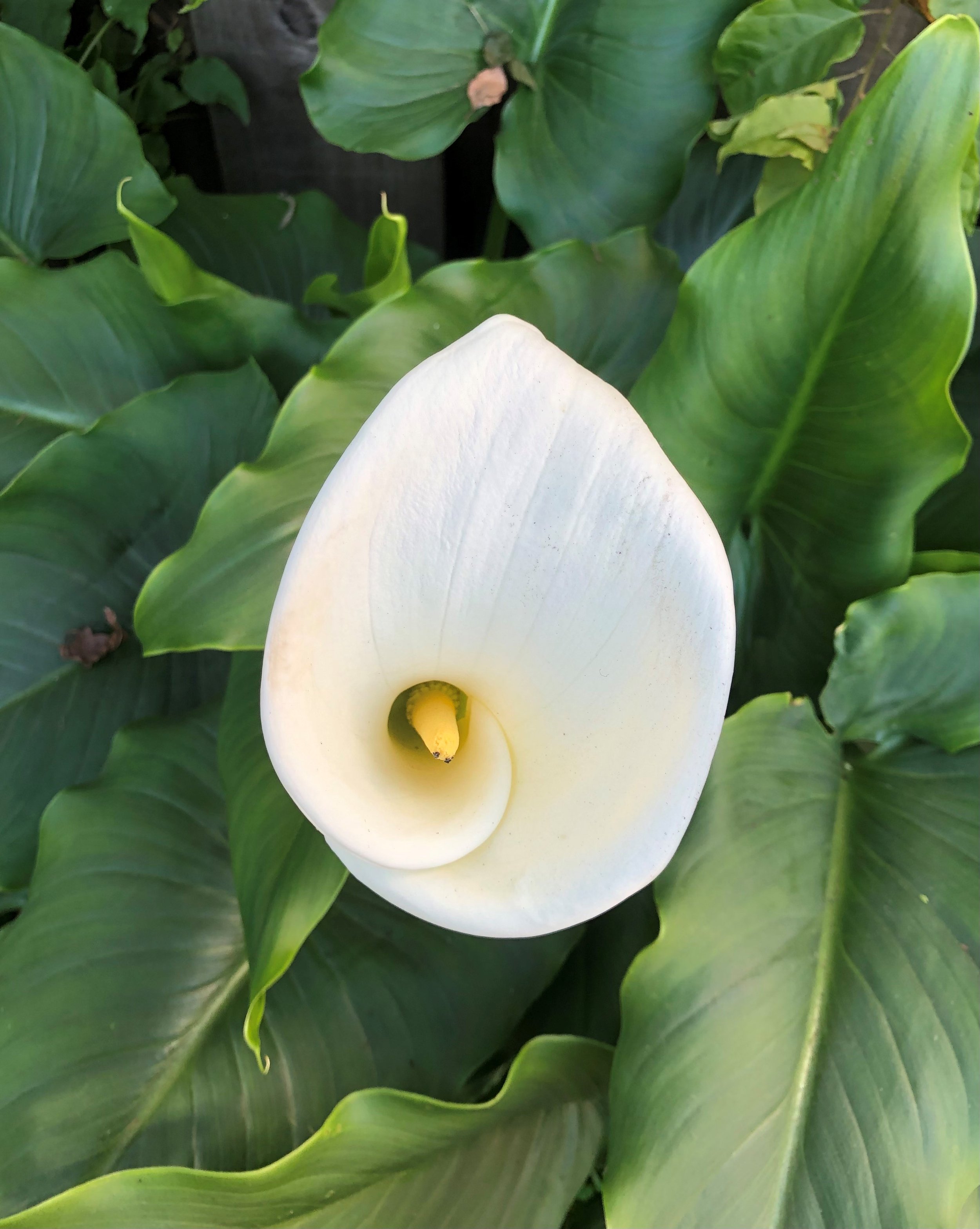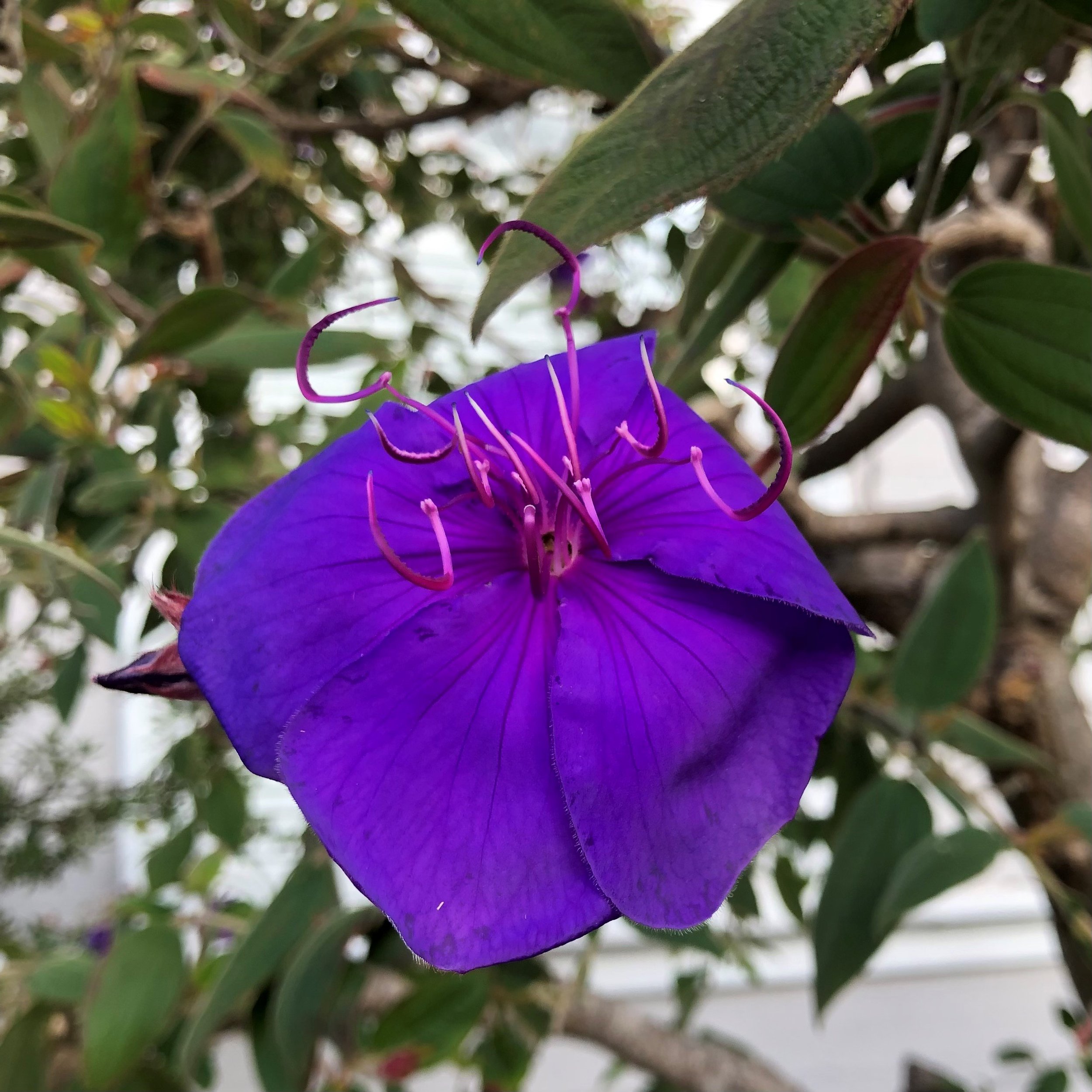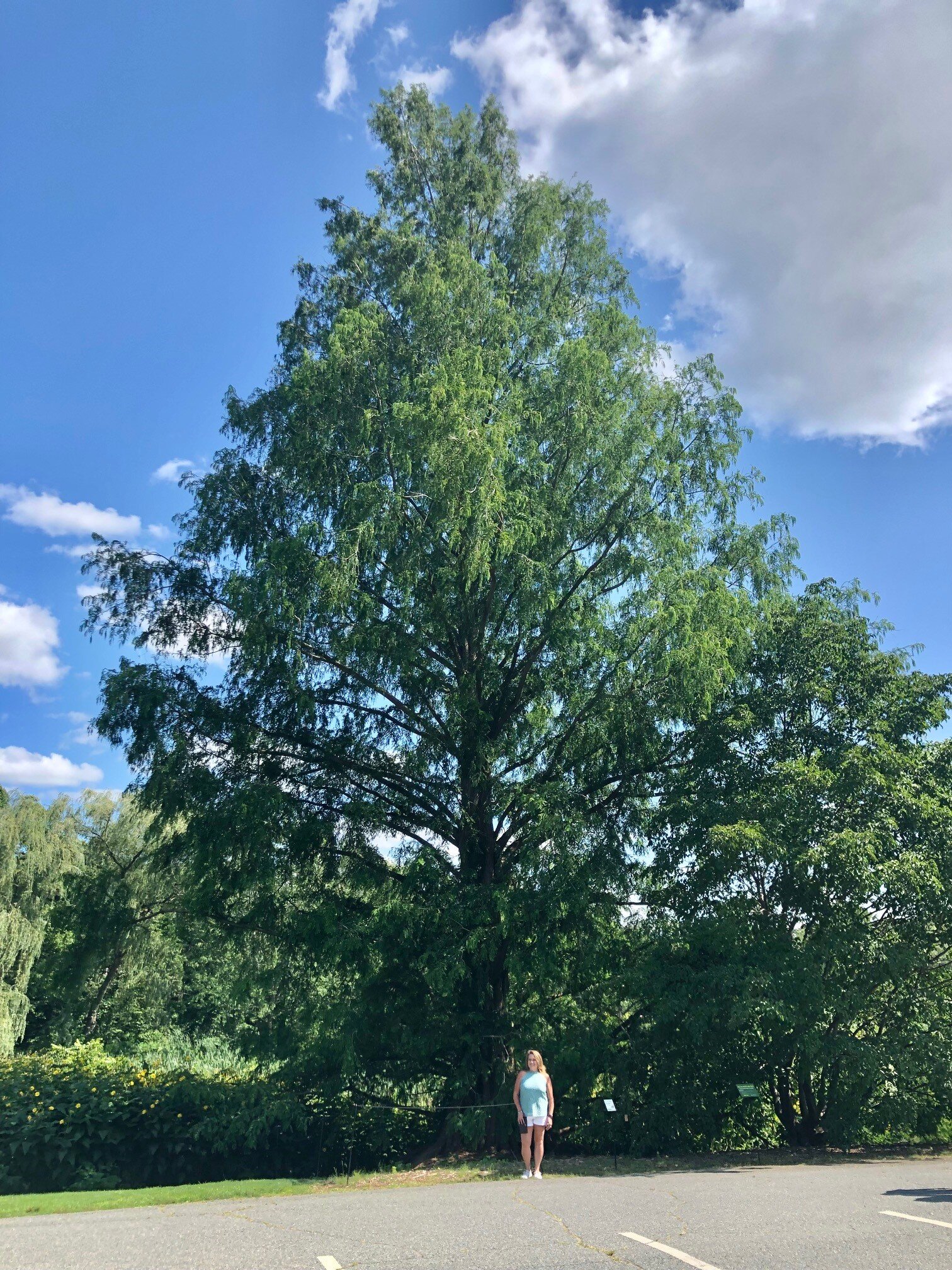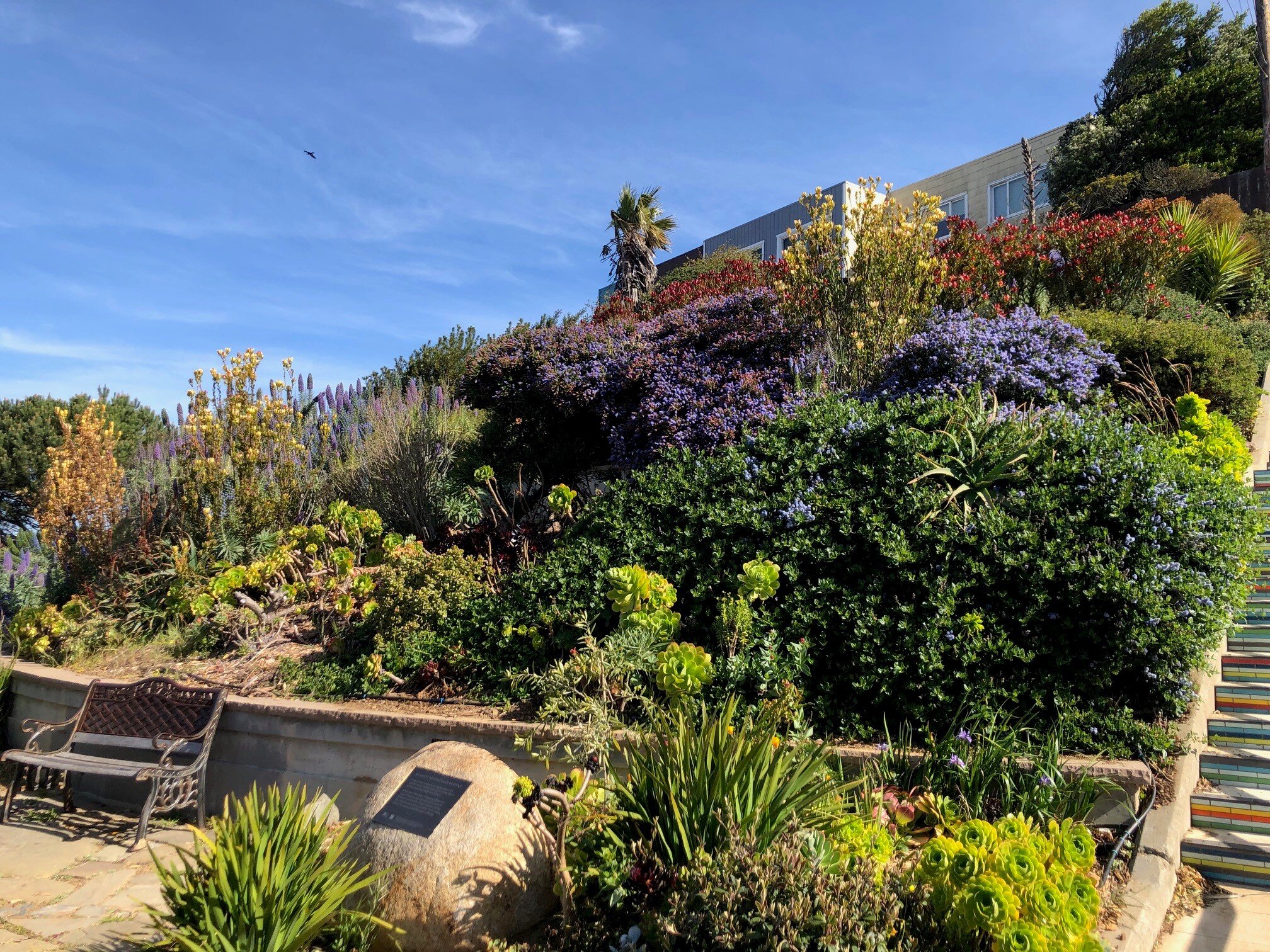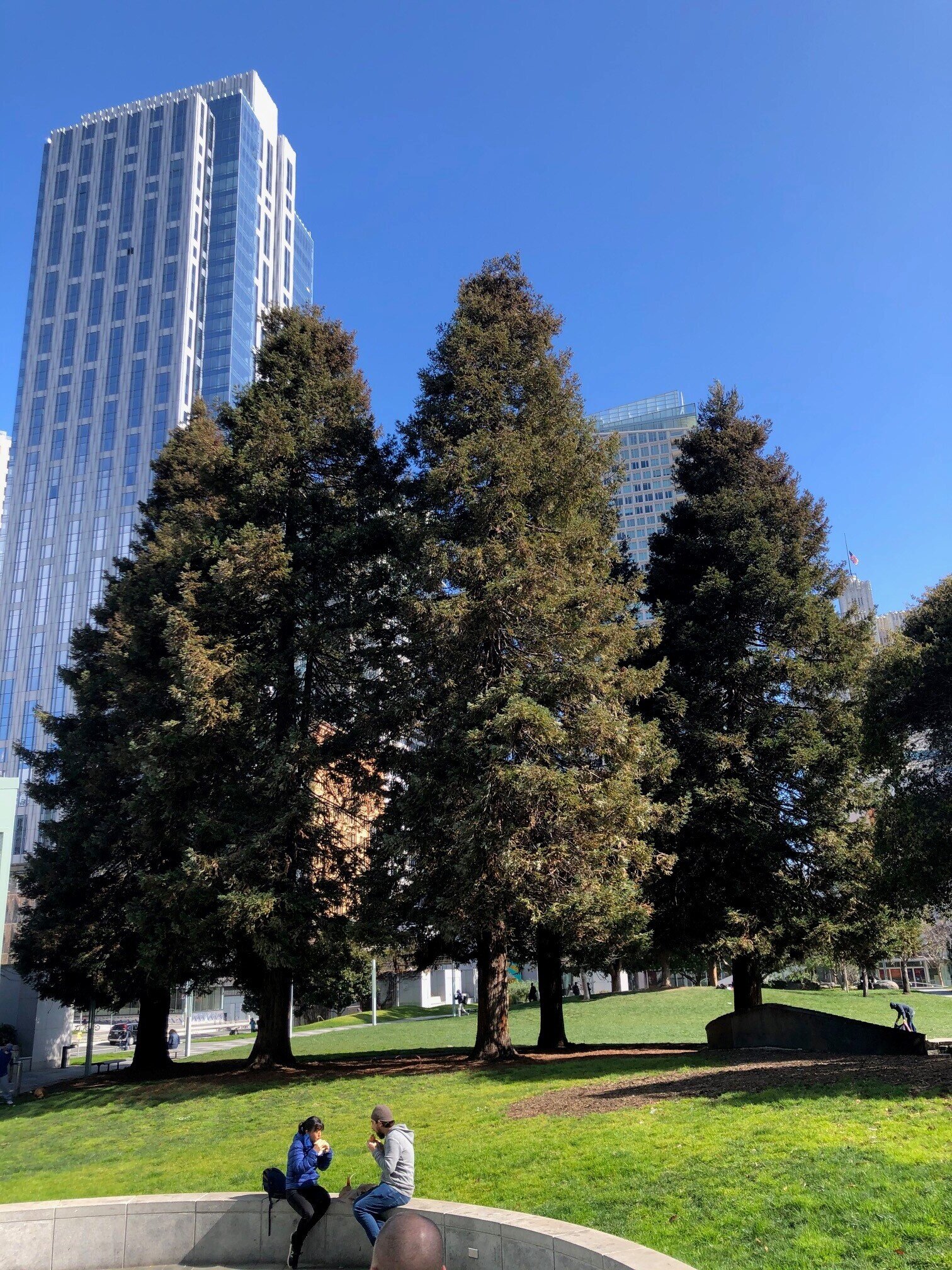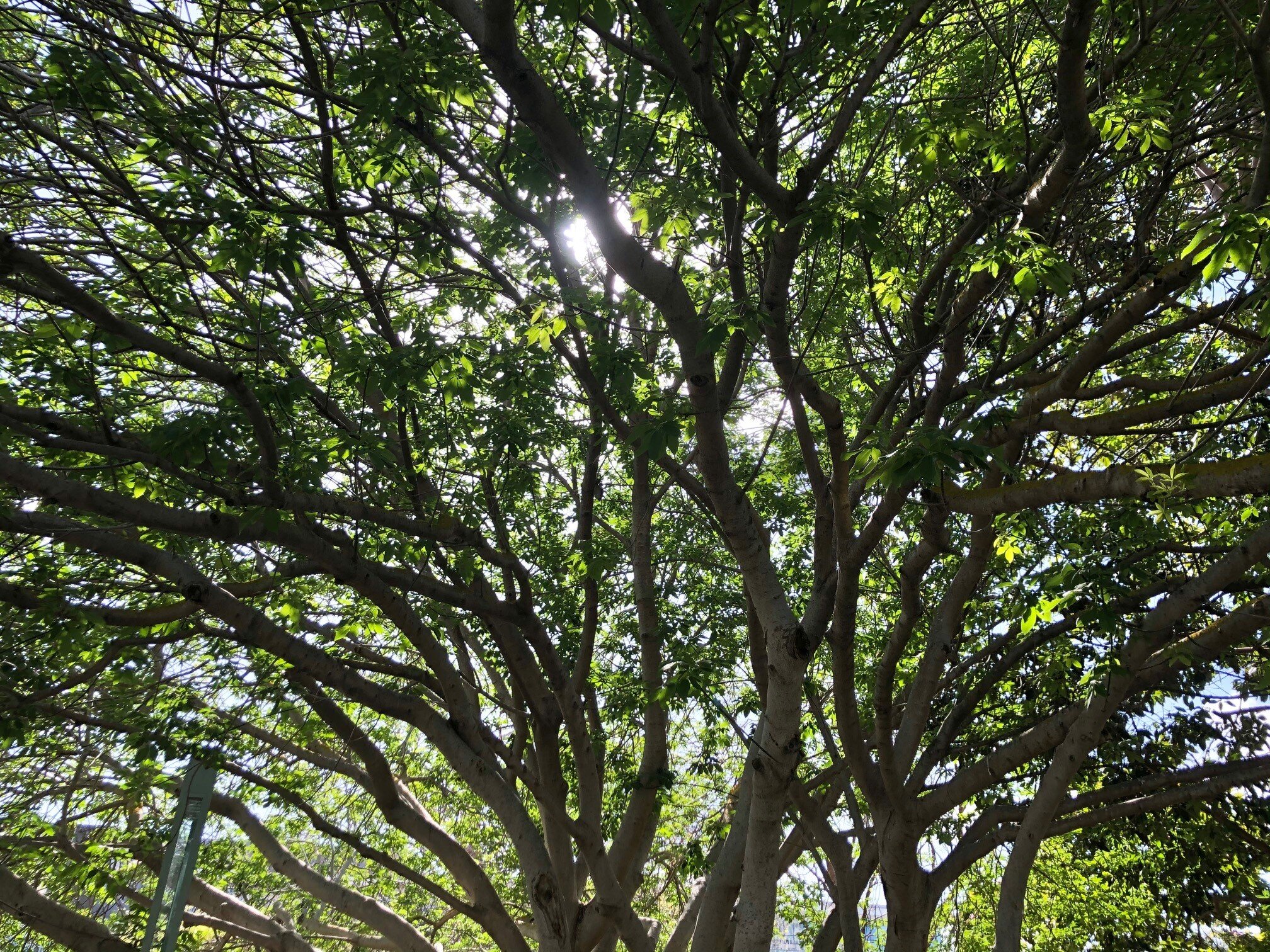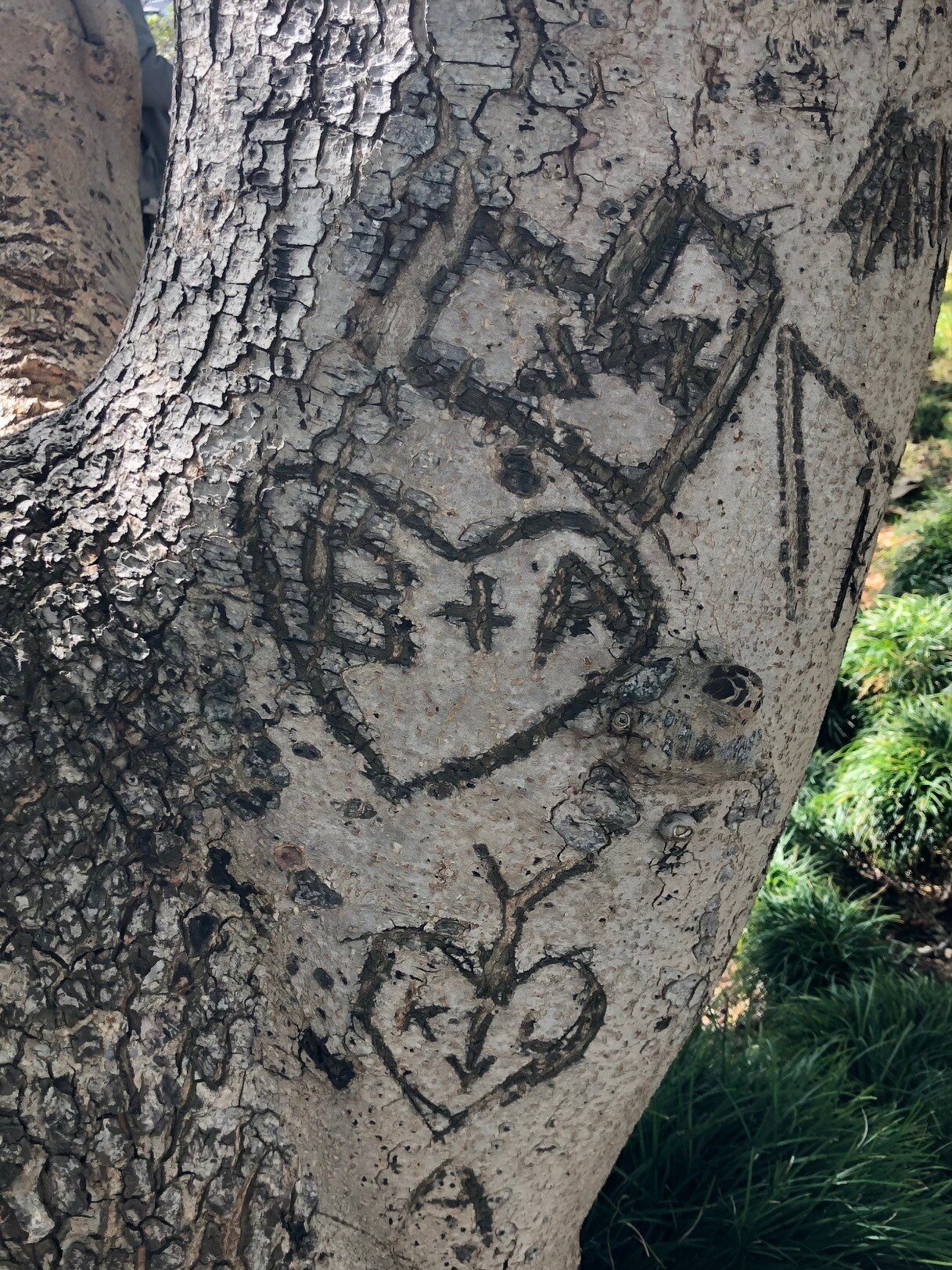Page Street (Haight Ashbury) Tree Tour (1-29-22)
We’ve noted before how much we enjoy interacting with folks who have caught us in the act of chalking one of our tree walks. This past Saturday was a record-setting day for such interactions. Strolling almost the full length of Page Street in the Haight-Ashbury neighborhood, we encountered enthusiastic locals out for a walk along the “slow street” section of Page. Many were imbibing coffee obtained from either Sight Glass or Flywheel coffee shops, which bookend our walk on Divisadero and Stanyan streets, but all were intrigued with our efforts to bring a little tree enlightenment to the ‘hood. Thank you all!
Today’s walk is simple. Begin at Sight Glass Coffee at Page and Divisadero streets and head west on Page to Stanyan Street. Jog south on Stanyan about 75’ to the courtyard of the brick apartment building on the southeast corner of Page and Stanyan (and perhaps hit up Flywheel Coffee for a refresher). Return to Page and head east, back to the beginning of the walk at Divisadero. This walk is a little over two miles in length.
Numbered trees are labeled with common and scientific names and country of origin, all written in white chalk on the sidewalk; accompanying numbers, in blue, run from 1 to 54. White arrows on the pavement provide directions whenever a turn is needed.
Our trio of tree geeks responsible for this tour is the same: Jason Dewees (author of Designing with Palms), Richard Turner (retired editor of Pacific Horticulture), and I’m Mike Sullivan, author of Trees of San Francisco.
Page Street, Divisadero to Broderick, north side
1. 1010 Page Mayten (Maytenus boaria), Chile
2. 1012 Page Red-flowering gum (Corymbia ficifolia), southwest Australia (amazing flowers in July and often at other seasons)
3. 1062 Page New Zealand Christmas tree, pōhutukawa in Māori (Metrosideros excelsa), New Zealand (the rounded leaves, relatively few aerial roots, and winter flowers suggest that this tree may be a hybrid with Metrosideros kermadecensis)
4. 1076 Page Chinese hackberry (Celtis sinensis), China, Japan, and Taiwan
Page Street, Broderick to Baker, north side
Spiral aloe (Aloe polyphylla)
5. 1124 Page Spiral aloe (Aloe polyphylla), mountains of Lesotho and east South Africa (definitely not a tree, but a magnificent specimen of this succulent; note the distinctive spiral arrangement of the leaves; this is one of the largest specimens in San Francisco)
6. 1130 Page Mulberry (Morus alba), China (the leaves are the only food of the silkworm, from whose cocoons we get silk thread)
7. 1154 Page Shamel ash (Fraxinus uhdei), Mexico
Page Street, Baker to Lyon, north side
8. 1234 Page Ghost cactus (Euphorbia ammak ‘Variegata’), Yemen (not a cactus, but definitely a succulent)
9. 1234 Page Olive (Olea europaea), Mediterranean Basin
10. 1240 Page Montezuma cypress or tule (Taxodium mucronatum), Mexico (this redwood relative is growing in a pot; in the ground it could grow to 50’ tall and wide)
11. 1250 Page Raywood ash (Fraxinus oxycarpa ‘Raywood’), C and S Europe, NW Africa, southwest Asia (a selected seedling found in a South Australia garden)
Page Street, Lyon to Central, north side
12. 1306 Page Australian willow or wilga (Geijera parviflora), east and southeast Australia (this tree generally prefers the warmth of the eastern parts of the city)
**Note the magnificent specimens of Corymbia ficifolia in this block**
13. 1316 Page Bronze loquat (Rhaphiolepis deflexa, syn. Eriobotrya deflexa), S China and Vietnam
Page Street, Central to Masonic, north side
14. 1456 Page Karo (Pittosporum crassifolium), New Zealand
15. 1476 Page Sweetshade tree (Hymenosporum flavum), eastern Australia (watch for the fragrant yellow flowers later in spring and through the summer)
Page Street, Masonic to Ashbury, north side
closeup of leaves of Santa Cruz Island ironwood (Lyonothamnus floribundus ssp. asplenifolius)
16. 1099 Masonic Santa Cruz Island ironwood (Lyonothamnus floribundus ssp. asplenifolius), California’s Channel Islands, except Catalina Island (2 young trees are on Page Street; a third did not make it)
17. 1520 Page Indian laurel fig (Ficus microcarpa ‘Nitida’), South Asia to Australia (commonly planted throughout the city)
18. 1546 Page Chinese windmill palm (Trachycarpus fortunei), China, Japan, Myanmar, and India
19. 1550 Page Angel’s trumpet (Brugmansia species), Andes
Page Street, Ashbury to Clayton, north side
20. 1628 Page Evergreen pear (Pyrus kawakamii), Taiwan (two trees)
21. 1650 Page Marina strawberry tree (Arbutus ‘Marina’), hybrid of Mediterranean species (first introduced in San Francisco)
22. 1652 Page Italian bay tree or Grecian laurel (Laurus nobilis), Mediterranean Basin (leaves of this tree are the bay leaves used in cooking)
23. 1660 Page River wattle (Acacia cognata), southeast Australia
24. 1666 Page Flowering cherry (Prunus serrulata), Japan (watch for the pink flowers in April)
25. 1686 Page Saucer magnolia (Magnolia x soulangeana), hybrid of east Asian species, developed in France
Page Street, Clayton to Cole, north side
Bailey’s acacia (Acacia baileyana ‘Purpurea’)
26. 1752 Page Bailey’s acacia (Acacia baileyana ‘Purpurea’), eastern Australia (this is among the earliest flowering trees in SF, always beginning in January)
27. 1768 Page Coast live oak (Quercus agrifolia), San Francisco and California native; Baja to Mendocino, always within 30 miles of the coast
28. 1794 Page Southern magnolia (Magnolia grandiflora), southeastern USA
Southern magnolia (Magnolia grandiflora)
Page Street, Cole to Shrader, north side
29 1828 Page Japanese blueberry tree (Elaeocarpus decipiens), Vietnam, China, and Japan
30. 1832 Page Cabbage tree or tī kōuka in Māori (Cordyline australis), New Zealand
31. 1860 Page Gold medallion tree (Cassia leptophylla), Brazil (there are still a few clusters of golden yellow flowers at the top of the tree)
32. 1890 Page Red ironbark (Eucalyptus sideroxylon), east and southeast Australia (red or pink flowers will appear later in the year)
Red ironbark (Eucalyptus sideroxylon)
**Detour north to 412 Shrader in spring to see the pendant yellow flowers on the only Laburnum we know of in the city**
Page Street, Shrader to Stanyan, north side
33. 1950 Page Kwanzan flowering cherry (Prunus serrulata ‘Kwanzan’), east Asia (watch for the big pink flowers on this row of trees in April)
**Detour south to see a beautiful specimen of Chamaecyparis species in the courtyard of 650-652 Stanyan Street**
Page Street, Stanyan to Shrader, south side
Fern pine (Afrocarpus gracilior)
34. 1953 Page Fern pine (Afrocarpus gracilior), east and S Africa
35. 1923 Page Victorian box (Pittosporum undulatum), eastern Australia (intensely fragrant white flowers cycle through the year)
36. 1901 Page Purple-leaf plum (Prunus cerasifera), Eurasia (several trees about to flower are on Shrader; formerly San Francisco’s most planted street tree; it is usually in flower by early February)
Page Street, Shrader to Cole, south side
37. 1849 Page Glossy privet (Ligustrum lucidum), Southern China
38. 1833 Page Olive (Olea europaea), Mediterranean Basin (this is a particularly fine specimen, in front of the library)
Page Street, Cole to Clayton, south side
39. 1767 Page Coast redwood (Sequoia sempervirens), Big Sur to southwest Oregon; CA coastal native (this species is the tallest tree in the world)
40. 1727 Page Snow-in-summer tree or flax-leaf paperbark (Melaleuca linariifolia), eastern Australia (feel the spongy bark; white flowers will cover the tree in summer)
Page Street, Clayton to Ashbury, south side
Australian tea tree (Leptospermum laevigatum)
41. 1601 Page Australian tea tree (Leptospermum laevigatum), southeast Australia (note the wonderfully contorted trunk)
Page Street, Ashbury to Masonic, south side
42. 1563 Page Ginkgo (Ginkgo biloba), China (last of an ancient lineage of gymnosperms; this young specimen has an oddly curving main trunk)
Page Street, Masonic to Central, south side
43. 1100 Masonic Red-flowering gum (Corymbia ficifolia), southwest Australia (trees are on Page; also flowers in white, coral, and orange)
44. 1421 Page Brisbane box (Lophostemon confertus), eastern Australia
Page Street, Central to Lyon, south side
Water gum (Tristaniopsis laurina)
45. 1357 Page Water gum (Tristaniopsis laurina), eastern Australia (this tree grows in stream-side locations in the wild, hence the common name; SF’s most commonly planted street tree)
46. 1301 Page Baby queen palm (Chamaedorea plumosa), Chiapas, Mexico
Page Street, Lyon to Baker, south side
47. 1295 Page Majestic Beauty Indian hawthorn (Rhaphiolepis x ‘Montic’), S China and Japan to southeast Asia (this specimen has had a rough life, yet continues to flower)
48. 1285 Page Angel’s trumpet (Brugmansia ‘Charles Grimaldi’), hybrid of South American species (big yellow flowers are fragrant in the evening; developed locally and named for the late San Francisco garden designer)
49. 1283 Page Australian tree fern (Cyathea cooperi, syn Sphaeropteris cooperi), northeast Australia (2 trees to the left of the garage door mural, within the front garden)
50. 1227 Page Brazilian pepper tree (Schinus terebinthifolia), Brazil, Argentina, Paraguay
a London plane leaf imprint in the Page Street sidewalk!
51. 1209 Page Port Orford cedar (Chamaecyparis lawsoniana), southwest Oregon and northwest California
Page Street, Broderick to Divisadero, south side
52. 1071 Page Tasmanian tree fern (Dicksonia antarctica), southeast Australia
53. 1035 Page Blackwood acacia (Acacia melanoxylon), southeast Australia
54. 299 Divisadero Primrose tree (Lagunaria patersonii), Australia and S Pacific Islands (tree is on Page)
This walk ends here, at Page and Divisadero streets, in front of the delightful Wholesome Bakery and across from the start of the walk.
Our regular commercial: This walking tour was organized by Mike Sullivan, author of The Trees of San Francisco and webmaster of www.sftrees.com; Jason Dewees, horticulturist at Flora Grubb Gardens and author of Designing with Palms; and Richard Turner, retired editor of Pacific Horticulture magazine . You can follow Mike and Jason on their tree-themed Instagram pages at @sftreeguy and @loulufan. Richard edited another great book on San Francisco trees: Elizabeth McClintock’s Trees of Golden Gate Park. If you’re a tree enthusiast, buy all three books!

















